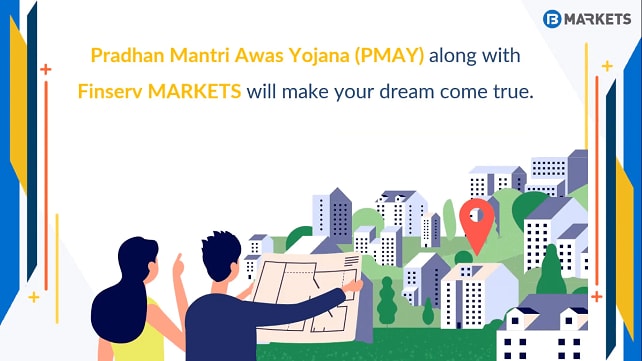The Pradhan Mantri Awas Yojana (PMAY) is a flagship government program with an objective to provide affordable housing to the economically weaker section of the society. Launched in the year 2015, the scheme offers a subsidy of over 6.5% on the Home Loan Interest Rate.
This move is taken to encourage a large number of poor families in rural and urban areas to avail a home loan facility for owning a ‘pucca’ home of their own. The interest rate subsidies and the tax benefits offered under the PMAY scheme are also aimed at encouraging a large number of first-time homebuyers to apply for a home loan.
Although they are divisions of the same government housing scheme, the PMAY-U and the PMAY-G differ on various parameters. Here we compare the differences between the urban and rural arms of the Pradhan Mantri Awas Yojana along with the following criteria:
Criteria |
PMAY-U |
PMAY-G |
Beneficiaries |
Beneficiaries include economically weak sections, middle income groups and low income groups. |
Gram sabhas in villages choose the beneficiaries based on the Socio-Economic and Caste Census. |
Area restrictions |
EWS applicants are eligible for houses with a carpet area of 322 square feet. For lower income groups, the designated carpet area is 645 square feet. |
Houses in rural areas will be spread across a carpet area of at least 269 square feet. |
No. of planned houses |
2 crore |
4 crore |
Selection |
Applicants must meet income eligibility criteria |
Applicants are selected by the gram sabha as per the Socio-Economic and Caste Census |
Fund allocation |
|
|
Home sizes |
|
|
The PMAY scheme is an amazing platform for low-to-mid income families that cannot afford to pay the high home loan EMIs. Moreover, the bifurcation of the scheme into PMAY urban and PMAY Gramin makes it easier to ensure that the funds are allocated according to the respective requirement across states. To avail a PMAY subsidy on your home loan, apply now for the Bajaj Markets Home Loan offered at Bajaj Markets. What’s more? The process is online and requires minimal paperwork. So why wait? Get your home loan with Bajaj Markets today and make your dream of owning a home a reality!
To know your home loan eligibility, visit us at Bajaj Markets today!
PMAY Video

Your dream of owning a home need not wait!, Pradhan Mantri Awas Yojana (PMAY) along with Bajaj Markets will make your dream come true And the best part! With PMAY scheme, you can get a significant subsidy on your Home Loan interest amount.
Home Loan Quick Links
- Apply for Home Loan
- Home Loan Eligibility
- Home Loan Interest Rate
- Home Loan EMI Calculator
- Home Loan Documents
- Home Loan for Government Employees
- Home Loan for Self Employed
- Home Construction Loan
- Home Renovation Loan
- Home Loan Tax Saving Calculator
- Home Loan for Women
- Home Loan Procedure
- Home Loan Top Up
- Home Loan Statement
- Joint Home Loan
Government Schemes
- Banglarbhumi West Bengal Land Record
- AnyRoR Gujarat Land Records
- Meebhoomi Andhra Pradesh Land Record
- Telengana Land Record
- Bhulekh Odisha
- Online EC Karnataka
- IGRS Telangana
- E-Swathu Karnataka
- IGRS Andhra Pradesh
- TN RERA
- Maha RERA
- Encumbrance Certificate
- MHADA Lottery
- Dharitri Assam
- Affordable Housing Scheme
PMAY Types FAQs
How many categories are there in PMAY?
PMAY has two categories, Pradhan Mantri Awas Yojana-Gramin and Pradhan Mantri Awas Yojana-Urban.
What is MIG1 and MIG2?
The Medium Income Group (MIG1) Scheme qualifies the beneficiaries whose annual household income between Rs. 6 lakh to 12 Lakh and Medium Income Group (MIG2) Scheme qualifies the beneficiaries whose annual household income between Rs. 12 lakh to 18 Lakh
What is the full form of PMAY-G?
The full form of PMAY-G is Pradhan Mantri Awas Yojana-Gramin.
What is the full form of PMAY-U?
The full form of PMAY-U is Pradhan Mantri Awas Yojana-Urban.
Enter Your OTP








